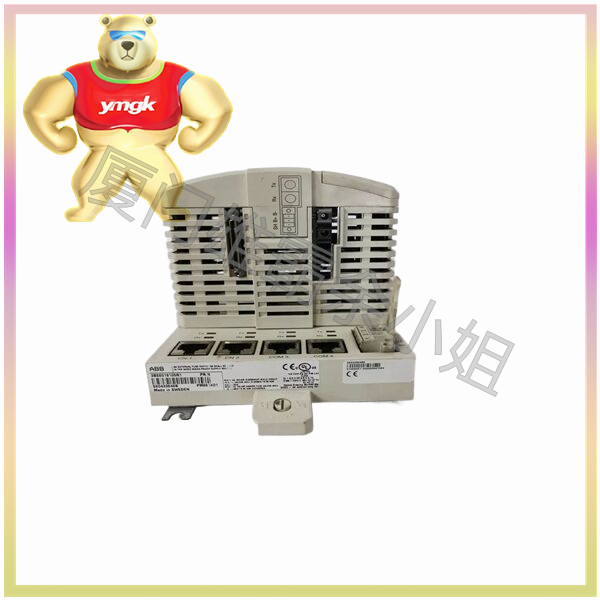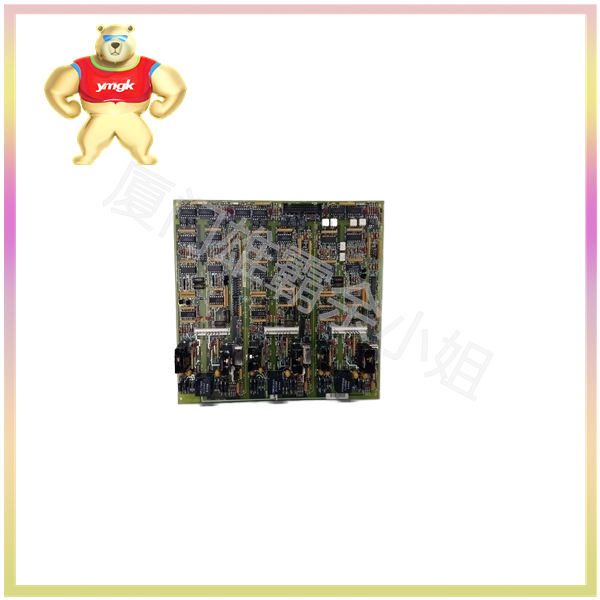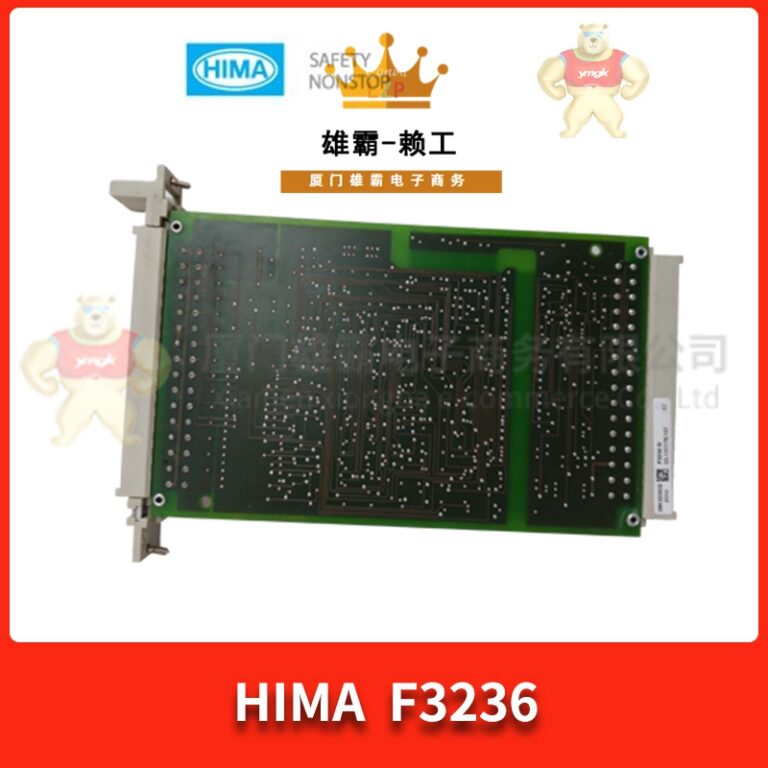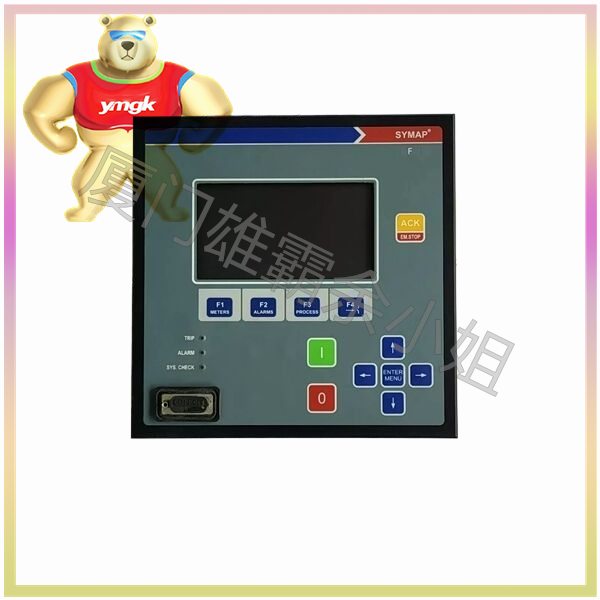A robot control system refers to a management system consisting of a control subject, a control object, and a control medium that has its own goals and functions. A control system means that it can maintain and change any interested or variable quantity within a machine, mechanism, or other device in the desired way. The control system is also implemented to achieve the predetermined ideal state of the controlled object. The control system tends the controlled object towards a desired stable state.
Functional requirements for robot control system
- Memory function: stores job sequence, motion path, motion mode, motion speed, and information related to production process.
- Teaching function: offline programming, online teaching, indirect teaching. Online teaching includes two types: teaching box and guided teaching.
- Function of connecting with peripheral devices: input and output interfaces, communication interfaces, network interfaces, synchronization interfaces.
- Coordinate setting function: There are four coordinate systems: joint, absolute, tool, and user-defined.
- Human machine interface: teaching box, operation panel, display screen.
- Sensor interfaces: position detection, visual, tactile, force sensing, etc.
- Position servo function: robot multi axis linkage, motion control, speed and acceleration control, dynamic compensation, etc.
- Fault diagnosis and safety protection function: monitoring system status during operation, safety protection under fault conditions, and fault self diagnosis.
The main types of robot control systems
The task of the control system is to control the movements and functions of the robot’s execution mechanism based on the robot’s job instruction program and the signals feedback from sensors. If the robot does not have information feedback features, it is an open-loop control system; If it has feedback characteristics, it is a closed-loop control system.
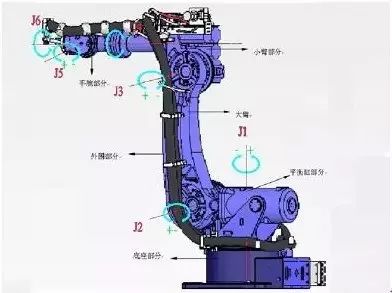
According to control principles, it can be divided into program control systems, adaptive control systems, and artificial intelligence control systems.
According to the form of motion control, it can be divided into point control and trajectory control.
Composition of industrial robot control system
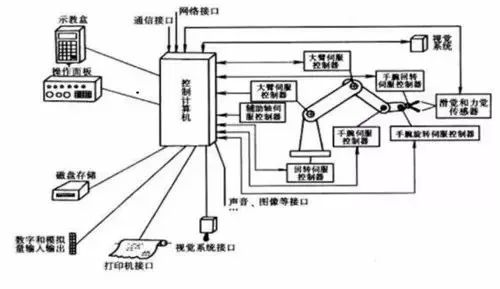
Control computer: the scheduling and command center organization of the control system.
Teaching box: The working trajectory and parameter settings of the teaching robot, as well as all human-machine interaction operations, have its own independent CPU and storage unit, and communicate with the main computer through serial communication to achieve information exchange.
Operation panel: consisting of various operation buttons and status indicator lights, it only completes basic functional operations.
Hard disk and floppy disk storage: peripheral storage for storing robot work programs.
Digital and Analog Input/Output: Input or output of various states and control commands.
Printer interface: Record various information that needs to be output.
Sensor interface: used for automatic detection of information and achieving smooth control of robots, generally consisting of force, tactile, and visual sensors.
Axis controller: controls the position, velocity, and acceleration of each joint of the robot.
Auxiliary equipment control: Used for controlling auxiliary equipment that cooperates with robots, such as claw positioners.
10 Communication interfaces: Implement information exchange between robots and other devices, generally including serial interfaces, parallel interfaces, etc.
- Network interface
1) Ethernet interface: It can achieve direct PC communication between multiple or single robots through Ethernet, with a data transmission rate of up to 10Mbit/s. After programming applications directly on the PC using Windows library functions, it supports TCP/IP communication protocol and loads data and programs into various robot controllers through Ethernet interface.
2) Fieldbus interface: Supports various popular fieldbus specifications such as Devicenet, ABRemoteI/O, Interbus-s, profibus DP, M-NET, etc.
Structure of Robot Control System
Centralized control system
Using a computer to implement all control functions has a simple structure and low cost, but poor real-time performance and difficulty in expansion. This structure is often used in early robots, and its composition diagram is shown in the figure.
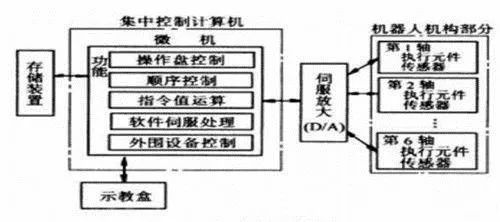
In the PC based centralized control system, the openness of PC resources is fully utilized, which can achieve good openness: various control cards, sensor devices, etc. can be integrated into the control system through standard PCI slots or through standard serial and parallel ports.
The advantages of a centralized control system are: low hardware cost, easy information collection and analysis, easy implementation of optimal system control, good overall and coordination, and convenient hardware expansion based on PC.
Its disadvantages are also obvious: the system control lacks flexibility, and the control risks are easily concentrated. Once a fault occurs, its impact is widespread and the consequences are serious; Due to the high real-time requirements of robots, when the system performs a large amount of data calculations, it will reduce the system’s real-time performance, and the system’s responsiveness to multitasking will also conflict with the system’s real-time performance; In addition, complex system connections can reduce the reliability of the system.
Master-slave control mode
Implement all control functions of the system using a master and slave two-level processor. The main CPU implements management, coordinate transformation, trajectory generation, and system self diagnosis, while the CPU controls all joint movements. Its composition diagram is shown in the figure.
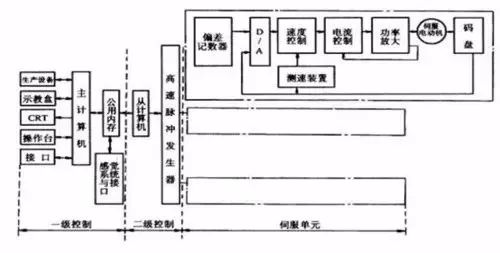
The master-slave control system has good real-time performance and is suitable for high-precision and high-speed control, but its system scalability is poor and maintenance is difficult.
Distributed control method
Divide the system control into several modules based on the nature and method of the system, each with different control tasks and strategies. The different modes can have a master-slave relationship or an equal relationship. This method has good real-time performance, is easy to achieve high-speed and high-precision control, is easy to expand, and can achieve intelligent control. It is currently a popular method, and its control block diagram is shown in the figure.
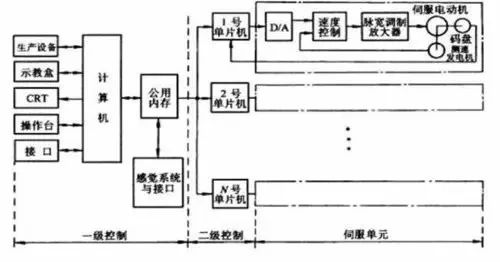
The main idea is “decentralized control, centralized management”, which means that the system can comprehensively coordinate and allocate its overall goals and tasks, and complete control tasks through the coordination of subsystems. The entire system is decentralized in terms of functionality, logic, and physics, so it is also known as a distributed control system or decentralized control system.
In this structure, subsystems are composed of controllers and different controlled objects or devices, and each subsystem communicates with each other through networks and other means. The distributed control architecture provides an open, real-time, and precise robot control system. Two level control is commonly used in distributed systems.
Two level distributed control system
It is usually composed of an upper computer, a lower computer, and a network. The upper computer can perform different trajectory planning and control algorithms, while the lower computer conducts research and implementation on interpolation subdivision, control optimization, etc. The upper computer and lower computer work in coordination with each other through a communication bus, which can be in the form of RS-232, RS-485, EEE-488, and USB bus.
Nowadays, the development of Ethernet and fieldbus technology provides robots with faster, more stable, and effective communication services. Especially fieldbus, it is applied in production sites to achieve bidirectional multi node digital communication between microcomputer based measurement and control equipment, thus forming a new type of network integrated fully distributed control system – fieldbus control system.
The advantages of distributed control systems are: good system flexibility, reduced risk of control system, decentralized control with multiple processors, which is conducive to parallel execution of system functions, improves system processing efficiency, and shortens response time.

